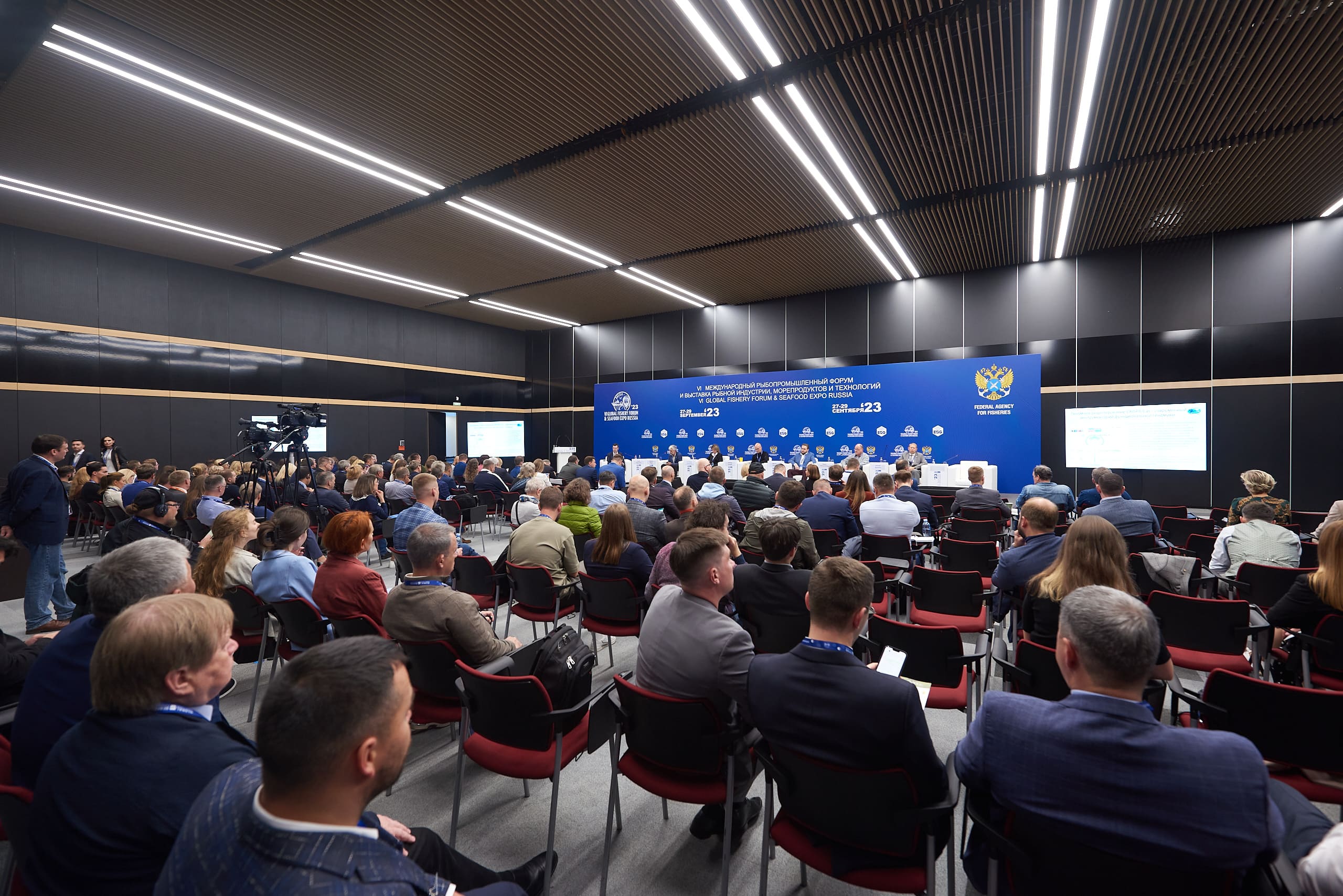Recent changes on the domestic market and the pressure of restrictions from the outside world inspire expansion and a search for new growth points. A roundtable on modern aquaculture farming was held in St. Petersburg on 28 September 2023 as part of the VI Global Fishery Forum. Experts discussed the solutions proposed by the research and manufacturing communities, focusing on import substitution, existing models and tools.
The roundtable was moderated by Ivan Zagorsky, Head of R&D at Inarctica. In his welcome speech highlighting the importance of increasing feed production in Russia and other strategic industry tasks, he set the tone for the subsequent discussion. He also reminded his audience that “the main focus should be on quality assurance and control, where we still have some concerns. Business and science have to work together on this to improve quality and manufacturing technologies”. The speaker also outlined the issue of planting stock shortage. Speaking about genetic selection, he pointed out that technology had made a quantum leap in this respect.
Nikolai Muge, Head of the Molecular Genetics Department at the Russian Federal Research Institute of Fisheries and Oceanography, spoke about development of genetic technologies in Russia as a tool for augmenting production efficiency. He described the aquaculture growth dynamics in Russia.
According to the speaker, the demand for caviar and planting stock ranges from 90% to 100%. The ban on purchasing methyl testosterone is a major bottleneck for the genetic development programme. “All imported trout caviar is of the same-sex (female) kind. As of today, you cannot legally purchase a drug in Russia to produce revertant males and obtain same-sex offspring.”
The speaker talked about the unique features of modern selective breeding. He noted that genome technology could help Russia outdo global competitors.
Anastasia Stepanova, Deputy General Director for Production at Adler Trout Breeding Plant, spoke about the company’s achievements and breeding tasks. She also raised the important issue of inadequate control over the sanitary and veterinary parameters of imported caviar.
Andrey Koleda, Head of Priladoje Group and Chair at the Karelian Union of Trout Breeders, provided an example of import substitution and described a method for adapting to the new conditions. He directed the audience’s attention to recirculating aquaculture systems (RAS) as an effective tool and a promising area for the industry’s further development. The speaker said that the company’s own planting stock covered its existing demand in the current period. He also spoke about the company’s vulnerability, i.e., its dependence on caviar supplies from abroad.
The issue of transition to automatic feeding was presented by Maxim Bykov, Founder of Organic Growth. This topic galvanized a debate that not all feed types are suitable for automatic feeders. The speaker also talked about the company’s experience of growing planting stock in recirculating aquaculture systems and shared which technologies and equipment could be used in production.
Viktor Khmelnitsky, Director of Aquafeed, spoke about the critical factors that determine recirculating aquaculture system efficiency. Speaking about operating costs, he said that depreciation should always be taken into account in calculations. He also pointed out that designers of RAS installations must pay extra attention to ventilation. When analyzing cost reduction trajectories, the speaker mentioned that “the main condition for finding optimal solutions is not to skimp on equipment reliability and high quality of feed for fish cultivation.” The feed quality should help reduce the burden on the biofilter. Touching on energy issues, the speaker described a project for building energy-saving systems.
A report by Alexey Myshkin, Director of Freshwater Fisheries Branch at the Russian Federal Research Institute of Fisheries and Oceanography, focused on the benefits a feed mill obtains from working with the academic community. He raised concerns about unstable feed quality: “The number one problem we had to solve and are now solving is to stabilize feed and make sure that adequate quality is preserved from one batch to another.”
The speaker described the capabilities for laboratory-based monitoring of raw material quality, supporting the entire feed manufacturing process line at all stages, monitoring the quality of output, and adjusting feed formulations, which is required due to the variable quality of the raw materials. He also gave an illustration of products with parameters comparable to those of foreign-made feeds. He then spoke about the pressing issue of the unpredictable pricingresulting from the unstable cost of raw materials.
The roundtable ended with an open presentation of projects in a pitch session format.
Yuri Kuchikhin, ichthyologist at Melkom Group, spoke about the search for alternative feed components required by the insufficient growth of the raw material base. He proposed using chlorella, spirulina and rapeseed cake for this purpose.
Artem Danilov, Deputy General Director for Quality at Karelian Fish Factories, presented technologies for vacuum deposition of oil onto pellets. He talked about partial replacement of fishmeal and mentioned experiments in using rapeseed and linseed oils in production.
The presentation by Igor Rybakov from Partner‑M homed in on the shortage of fishmeal and fish oil on the feed product market, as well as on a ban on exports of these ingredients as a potential solution to the problem. A series of high-tech legume-based products were also presented to the attendees.
Igor Borisov, Sales Director at A-Salt, a trade and logistics operator, spoke about the Aquaculture project, which is designed to supply imported starter and production feeds for trout.
The roundtable was a platform for discussing existing solutions, trends and new technologies. The participants shared their forecasts and assessments of the current situation in production, identified areas for cooperation among industry players and crucial tasks for the future.


